Day Trips at Rabat and from Rabat Morocco 2025
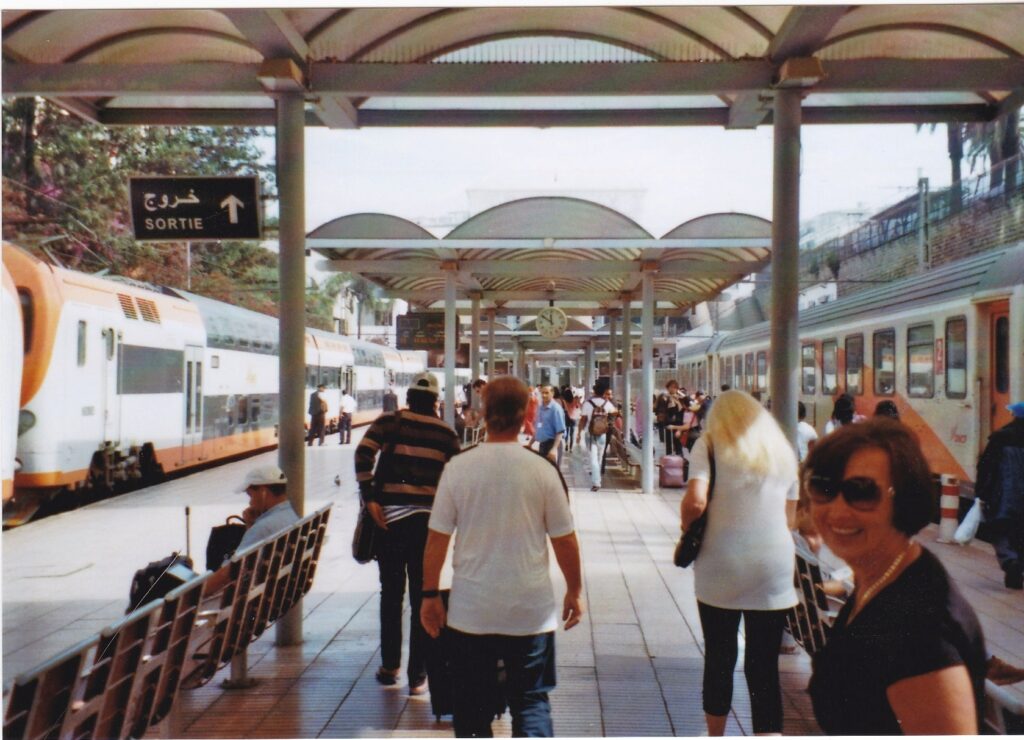
Rabat’s historical significance as Morocco’s capital city becomes immediately apparent when you embark on a comprehensive historical day trip through its most treasured monuments. The city’s unique position as both an ancient settlement and a modern political center creates a fascinating layered experience that can easily fill an entire day of exploration.
Tour Hassan stands as perhaps Rabat’s most iconic landmark and should be your first stop on any historical itinerary. This magnificent 12th-century minaret, rising 44 meters above the Bou Regreg River, represents the remnants of what was intended to be the world’s largest mosque. The site tells the story of the Almohad dynasty’s ambitious architectural dreams, with the unfinished mosque’s foundations still visible around the tower. The best time to visit Tour Hassan is during the early morning hours (8:00-9:00 AM) when the lighting is optimal for photography and crowds are minimal. Professional guides available on-site can provide detailed historical context for 150-200 MAD per group.
Adjacent to Tour Hassan, the Mausolée Mohammed V houses the tombs of Morocco’s beloved King Mohammed V and King Hassan II. This architectural masterpiece, completed in 1971, showcases the finest examples of modern Moroccan craftsmanship with its intricate marble work, carved wood, and traditional zellige tilework. The mausoleum is guarded by the Royal Guard in traditional dress, creating spectacular photo opportunities. Visitors should dress modestly and maintain respectful silence within the sacred space.
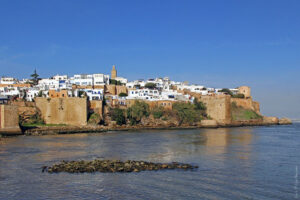
The Kasbah des Oudayas offers one of Morocco’s most picturesque experiences, perched dramatically on cliffs overlooking the Atlantic Ocean. This 12th-century fortress neighborhood features narrow cobblestone streets lined with blue and white painted houses, creating an almost Mediterranean atmosphere. The kasbah contains several must-visit attractions including:
- Oudayas Museum: Showcasing traditional Moroccan arts and crafts
- Andalusian Gardens: A peaceful oasis with orange trees and fountains
- Kasbah Mosque: One of Morocco’s oldest mosques (exterior viewing only for non-Muslims)
- Platform overlooking the ocean: Perfect for sunset photography
Plan to spend 2-3 hours exploring the kasbah thoroughly, including time for mint tea at one of the traditional cafés overlooking the ocean. The narrow streets can become crowded during peak hours (11 AM – 2 PM), so early morning or late afternoon visits provide the best experience.
Chellah represents one of Rabat’s most atmospheric historical sites, combining Roman ruins with medieval Islamic architecture in a romantic garden setting. This necropolis and ancient settlement dates back over 2,000 years and served as a royal burial ground during the Marinid dynasty. The site features:
Historical PeriodKey FeaturesBest Photo SpotsRoman Era (40-250 AD)Ancient foundations, carved stonesRoman ruins with stork nestsIslamic Period (13th-14th century)Minaret, royal tombs, mosque ruinsMinaret against sky, garden viewsModern GardensBotanical varieties, peaceful pathsFountain areas, flowering trees
The site is particularly magical during spring months when the gardens are in full bloom and migratory birds nest in the ancient minaret. Allow 1-2 hours for a thorough exploration, and consider bringing a picnic to enjoy in the designated garden areas.
Cultural Day Trips at Rabat’s Museums and Art Centers – Best 2025 Experiences
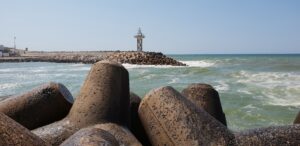
Rabat’s cultural landscape has undergone significant transformation in recent years, establishing itself as Morocco’s premier destination for contemporary arts and cultural experiences. The city’s investment in world-class museums and cultural facilities makes it an essential destination for culture enthusiasts.
The Musée Mohammed VI d’art moderne et contemporain stands as Africa’s largest museum dedicated to modern and contemporary art, housing an impressive collection of Moroccan and international works. Opened in 2014, this architectural marvel spans 8,000 square meters and features rotating exhibitions alongside permanent collections spanning the 19th century to contemporary times. The museum’s 2025 programming includes:
- “Morocco Through Time” permanent exhibition: Showcasing the evolution of Moroccan artistic expression
- Contemporary African Art showcase: Featuring works from across the continent
- Digital art installations: Interactive experiences and multimedia presentations
- Educational workshops: Available in Arabic, French, and English
The museum offers guided tours in multiple languages (100 MAD per person), audio guides (50 MAD), and family-friendly activities designed to engage visitors of all ages. The museum’s café serves excellent Moroccan-fusion cuisine with views of the surrounding gardens.
Rabat’s Archaeological Museum houses one of North Africa’s most significant collections of archaeological artifacts, spanning from prehistoric times to the Islamic period. Recent renovations completed in 2024 have modernized the displays while preserving the building’s original 1930s architecture. Highlights include:
- Roman bronzes from Volubilis: Including the famous “Ephebe” statue
- Prehistoric tools and pottery: Demonstrating early human settlement in Morocco
- Islamic period artifacts: Coins, ceramics, and architectural elements
- Interactive timeline displays: Showing Morocco’s historical development
The museum’s new multimedia presentations provide context for artifacts and their historical significance. Professional archaeologists lead specialized tours on Saturdays (200 MAD per person), offering in-depth analysis of key pieces and excavation techniques.
Rabat Beach and Coastal Day Trip Activities – 2025 Seasonal Guide
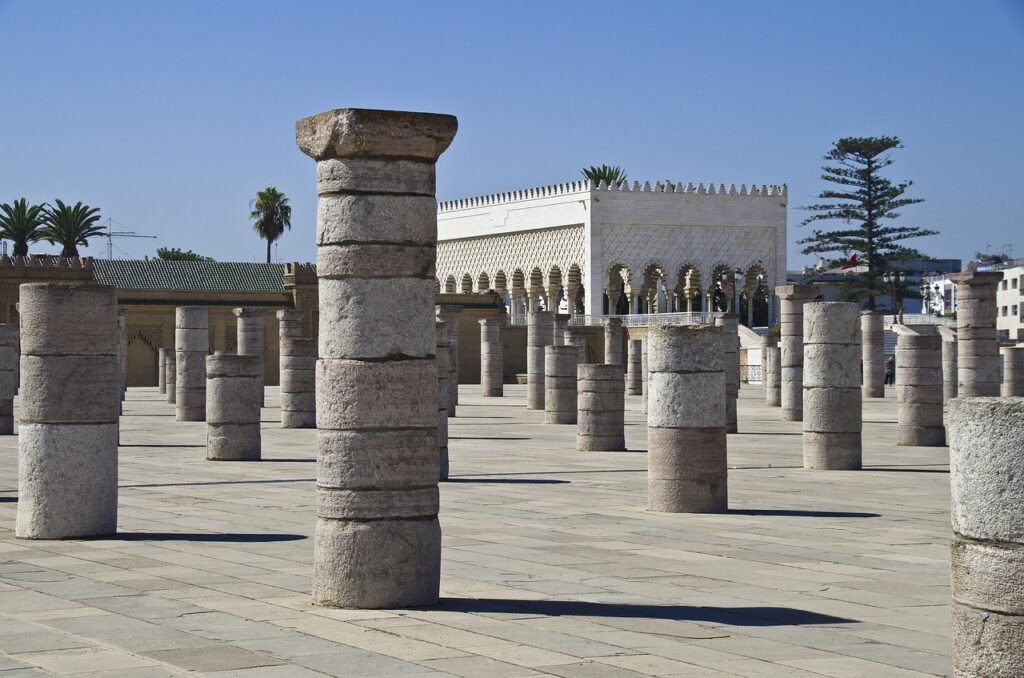
Rabat’s Atlantic coastline offers a refreshing contrast to the city’s historical and cultural attractions, providing opportunities for relaxation, water sports, and coastal exploration. The city’s beaches have undergone significant development in recent years, with improved facilities and enhanced safety measures making them more attractive to both locals and tourists.
Rabat Beach (Plage de Rabat) extends for several kilometers along the Atlantic coast and has been transformed through substantial infrastructure investments completed in 2024. The beach now features:
- Modern changing facilities and showers: Clean, well-maintained amenities
- Certified lifeguard stations: Operating daily from 9 AM to 6 PM during peak season
- Beach wheelchair access: Improved accessibility for visitors with mobility challenges
- Organized beach sports: Volleyball courts, football areas, and equipment rental
- Seaside restaurants and cafés: Offering fresh seafood and traditional Moroccan cuisine
The beach is particularly popular with families and offers safe swimming conditions during most months, though water temperatures are most comfortable from June through October. Surfing enthusiasts will find decent waves, especially during winter months, with equipment rental available from certified operators (surfboard rental: 150-200 MAD per day).
Temara Beach, located 12 kilometers south of Rabat center, provides a quieter alternative with fewer crowds and more natural surroundings. This beach is particularly popular among locals and offers:
- Horseback riding opportunities: Professional stables offering beach rides (300-500 MAD per hour)
- Beach camping facilities: Organized camping areas with basic amenities
- Traditional fish markets: Fresh catches sold directly by local fishermen
- Coastal hiking trails: Scenic walks along clifftops with ocean views
Transportation to Temara Beach is easily arranged through local buses (15 MAD) or grand taxis (80-100 MAD from Rabat center). The beach is most pleasant during shoulder seasons (April-May, September-October) when temperatures are moderate and crowds are manageable.
Modern Rabat Day Trip: Contemporary Attractions and 2025 Updates

Rabat’s transformation into a modern capital city is evident in its contemporary districts, which offer a fascinating contrast to the historical medina and showcase Morocco’s economic development and urban planning achievements. These areas provide insight into contemporary Moroccan life and offer excellent shopping, dining, and architectural experiences.
The Agdal district represents Rabat’s most significant modern development, featuring wide boulevards, contemporary architecture, and upscale shopping centers. This area has experienced rapid growth since 2020, with several major projects completed in 2024-2025:
Rabat City Center: A massive mixed-use development including:
- International brand retailers (Zara, H&M, Carrefour)
- Multiplex cinema with IMAX technology
- Food court featuring international and Moroccan cuisine
- Underground parking with 2,000 spaces
The Hassan II Avenue serves as Rabat’s main commercial artery, stretching from the train station to the ocean. This boulevard showcases the city’s commitment to modern urban design while respecting traditional architectural elements. Notable features include:
- Tram line integration: The modern tram system completed in 2023 provides efficient transportation
- Mixed architectural styles: Blending traditional Moroccan elements with contemporary design
- Café culture: Numerous modern cafés offering excellent coffee and pastries
- Banking district: Morocco’s major financial institutions maintain headquarters here
Excursions d’une Journée au Départ de Rabat: Best Day Trips from Rabat Morocco 2025
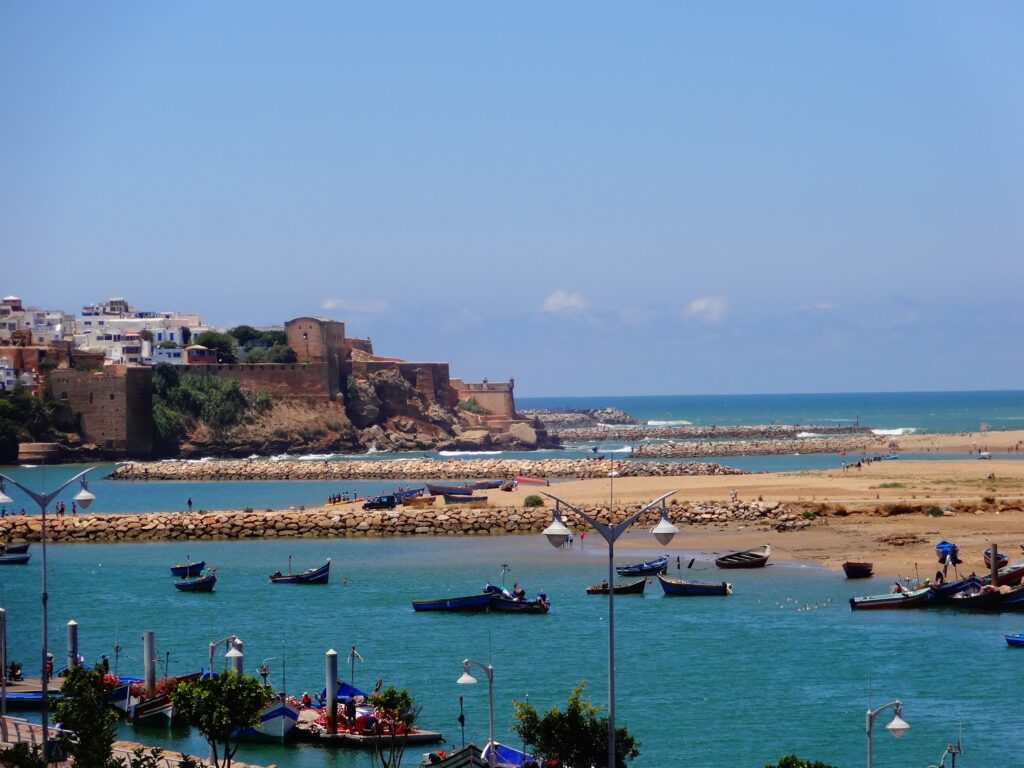
Casablanca Day Trip from Rabat Morocco – Top-Rated 2025 Excursion
The journey between Rabat and Casablanca represents one of Morocco’s most convenient and rewarding day trips, connecting the political capital with the economic powerhouse in just one hour by high-speed rail. This excursion depuis Rabat offers travelers the opportunity to experience Morocco’s most cosmopolitan city while returning to Rabat’s more relaxed atmosphere in the evening.
Transportation Options and 2025 Updates:
The Al Boraq high-speed train remains the most efficient and comfortable option for travel between the two cities. Recent schedule enhancements in 2025 include:
Service TypeFrequencyJourney TimePrice RangeFirst ClassEvery 30 minutes55 minutes80-100 MADSecond ClassEvery 30 minutes55 minutes65-75 MADBusiness ClassEvery hour50 minutes120-150 MAD
Advance booking through the ONCF mobile app offers 10-15% discounts, and group bookings (5+ people) receive additional savings. The trains feature air conditioning, Wi-Fi, and food service, making the journey comfortable and productive.
Hassan II Mosque – The Crown Jewel of Casablanca
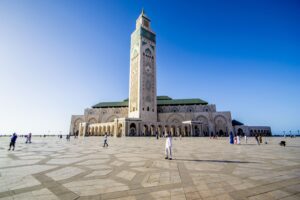
The Hassan II Mosque stands as one of the world’s architectural marvels and Morocco’s most visited religious site. This massive structure, completed in 1993, features a 210-meter minaret (the world’s tallest) and can accommodate 105,000 worshippers. The mosque’s unique features include:
- Oceanfront location: Built partially over the Atlantic Ocean on reclaimed land
- Retractable roof: The prayer hall’s roof opens to the sky in good weather
- Laser beam: The minaret projects a light beam toward Mecca during evening prayers
- Intricate craftsmanship: Over 6,000 Moroccan artisans contributed to its decoration
2025 Visiting Guidelines:
- Guided tours available: Daily except Friday mornings (prayer time)
- Tour times: 9 AM, 10 AM, 11 AM, 2 PM, 3 PM, 4 PM
- Duration: 45-60 minutes with professional multilingual guides
- Cost: 130 MAD for adults, 30 MAD for children under 12
- Dress code: Modest clothing required (covered shoulders and knees)
The mosque’s visitor center, renovated in 2024, provides historical context and architectural details through interactive displays and documentary films. Audio guides are available in 8 languages, and the gift shop features authentic Moroccan handicrafts.
Casablanca Medina and Modern Districts
While smaller and less tourist-oriented than Fez or Marrakech medinas, Casablanca’s medina offers an authentic glimpse into daily Moroccan urban life. The area features traditional souks, local eateries, and residential neighborhoods where visitors can observe contemporary Moroccan society. Key experiences include:
- Central Market (Marché Central): Fresh produce, spices, and local specialties
- Traditional hammams: Authentic bathhouse experiences (150-300 MAD)
- Local cafés: Mint tea and traditional pastries in neighborhood settings
- Artisan workshops: Leather goods, textiles, and metalwork
The Corniche waterfront area provides a striking contrast with its modern restaurants, beach clubs, and shopping centers. This 8-kilometer coastal boulevard offers:
- Beach clubs: Upscale venues with pools, restaurants, and ocean access
- Ain Diab Beach: Popular swimming and surfing destination
- Morocco Mall: One of Africa’s largest shopping centers
- Seaside restaurants: Fresh seafood with ocean views
Salé Day Trip: Rabat’s Sister City – Best Excursion depuis Rabat
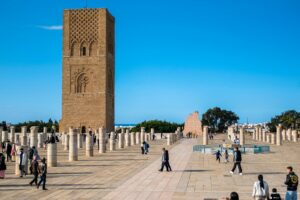
The relationship between Rabat and Salé dates back over a millennium, with these twin cities sharing the mouth of the Bou Regreg River while maintaining distinct cultural identities. This proximity makes Salé an ideal half-day excursion depuis Rabat, offering visitors the chance to experience a more traditional Moroccan city with fewer tourist crowds and more authentic local interactions.
Transportation Between Rabat and Salé:
The connection between these sister cities has been revolutionized by the modern tram system, inaugurated in 2023. The tram provides an efficient, comfortable, and scenic journey across the Bou Regreg River:
- Tram Line 1: Connects Rabat city center to Salé medina
- Journey time: 20-25 minutes depending on destination
- Operating hours: 6 AM to 11 PM daily
- Frequency: Every 6-8 minutes during peak hours
- Cost: 6 MAD per journey, day passes available for 15 MAD
Traditional boat services still operate across the river, providing a more atmospheric crossing experience (5 MAD per person). These small boats offer excellent photography opportunities and a sense of the historical connection between the cities.
Salé Medina – A Living Heritage Site
The Salé medina represents one of Morocco’s best-preserved medieval cities, with its UNESCO World Heritage status ensuring protection of its architectural integrity and traditional way of life. Unlike more tourist-oriented medinas, Salé maintains its function as a living residential and commercial center for local families.
The medina’s layout follows traditional Islamic urban planning principles, with narrow streets designed to provide shade and channel cooling breezes from the ocean. Key architectural and cultural highlights include:
The Great Mosque of Salé: Dating from the 12th century, this mosque features classic Almohad architectural elements and serves as the medina’s spiritual center. While non-Muslims cannot enter, the exterior showcases beautiful geometric patterns and traditional stonework.
Traditional souks and markets: Salé’s markets specialize in specific crafts and goods:
- Pottery quarter: Famous throughout Morocco for distinctive blue and white ceramics
- Textile souks: Traditional weaving and embroidery workshops
- Spice markets: Aromatic herbs, spices, and traditional medicines
- Leather goods: High-quality craftsmanship at reasonable prices
Mausoleum of Sidi Abdellah ben Hassoun: This 17th-century mausoleum honors Salé’s patron saint and attracts pilgrims from throughout Morocco. The site features beautiful tilework, carved plaster, and peaceful gardens. Visitors should dress modestly and maintain respectful behavior.
Meknes Day Trip from Rabat Morocco – Premium 2025 Excursion Options
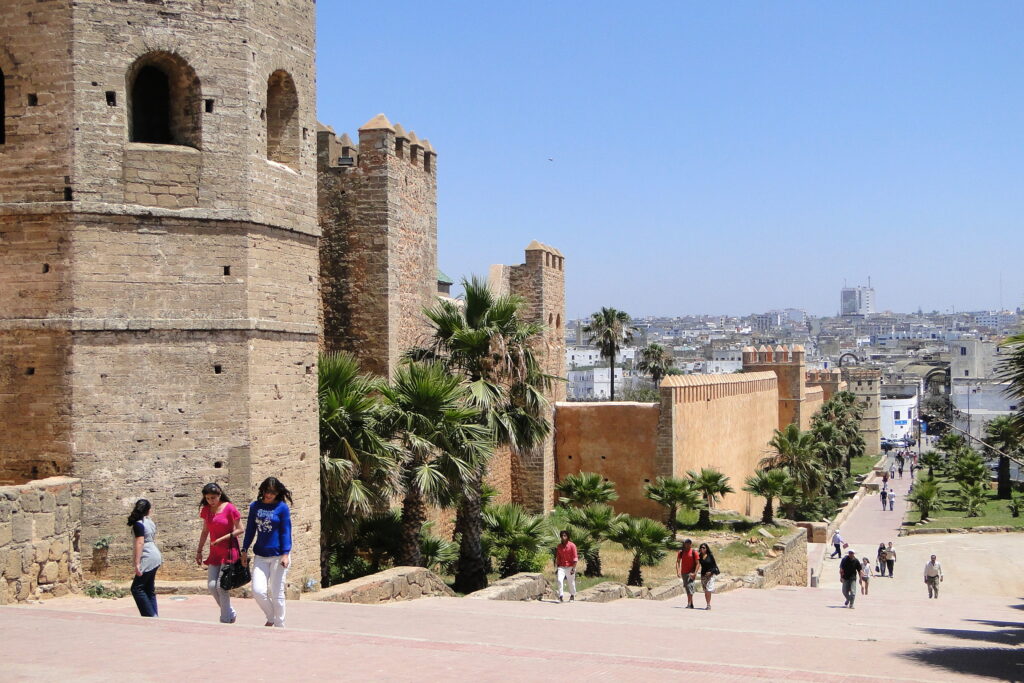
Meknes, one of Morocco’s four imperial cities, offers one of the most rewarding day trips from Rabat Morocco, combining spectacular Islamic architecture, fascinating history, and proximity to the ancient Roman ruins of Volubilis. This UNESCO World Heritage city served as the capital of Morocco under Sultan Moulay Ismail in the 17th and 18th centuries, resulting in an extraordinary collection of palaces, gates, and monuments.
Transportation and Logistics:

The 140-kilometer journey from Rabat to Meknes takes approximately 2 hours by road, with several transportation options available:
Private car rental with driver: Most flexible option allowing stops at viewpoints and villages
- Cost: 800-1,200 MAD for full day including driver and fuel
- Advantages: Customizable itinerary, luggage storage, air conditioning
- Best for: Families, photography enthusiasts, comfort-focused travelers
Organized tour groups: Professional guides and guaranteed transportation
- Cost: 400-600 MAD per person including transportation and guide
- Group sizes: Typically 8-15 people maximum
- Languages: Arabic, French, English, and Spanish available
- Inclusions: Round-trip transport, professional guide, entrance fees
Public transportation: Most economical option via CTM or Supratours buses
- Cost: 60-80 MAD each way
- Departure times: 7 AM, 9 AM, 11 AM, 2 PM from Rabat central bus station
- Journey time: 2.5-3 hours each way
- Best for: Budget travelers, independent exploration
Bab Mansour – The Gateway to Imperial Meknes
Bab Mansour stands as one of North Africa’s most magnificent gates and serves as the dramatic entrance to Meknes’ imperial city. Completed in 1732 under Sultan Moulay Ismail, this architectural masterpiece measures 16 meters high and showcases the pinnacle of Moroccan decorative arts. The gate features:
- Intricate geometric patterns: Hand-carved marble and stone creating complex mathematical designs
- Calligraphic inscriptions: Koranic verses and historical texts in classical Arabic
- Horseshoe arch design: Classic Islamic architectural elements with regional variations
- Flanking columns: Recycled Roman columns from nearby Volubilis, demonstrating historical continuity
The gate is most photogenic during golden hour (one hour before sunset), when the warm light enhances the intricate details and creates dramatic shadows. Professional photographers recommend shooting from the adjacent Place el-Hedim to capture the full scale and architectural context.
Royal Stables (Heri es-Souani) and Granaries
The Royal Stables complex represents one of Meknes’ most impressive monuments and provides insight into Sultan Moulay Ismail’s ambitions to create a royal city rivaling Versailles. These massive structures, built in the early 18th century, could house up to 12,000 royal horses along with vast quantities of grain and supplies.
Recent conservation efforts completed in 2024 have improved visitor access and interpretation:
- Restored viewing platforms: Safe access to upper levels for panoramic views
- Interpretive displays: Historical context and architectural explanations
- Improved lighting: LED systems highlighting architectural features
- Visitor facilities: Rest areas, information center, and gift shop
The engineering sophistication of these structures becomes apparent through guided tours that explain the complex water supply systems, underground grain storage, and earthquake-resistant construction techniques used by Moroccan architects three centuries ago.
Best Rabat Tours and Excursions 2025: Specialized Day Trip Experiences
Nature and Outdoor Day Trips from Rabat – Eco-Tourism 2025

Morocco’s Atlantic coast region surrounding Rabat offers diverse natural environments that provide welcome alternatives to urban exploration. These nature-focused excursions depuis Rabat showcase the country’s biodiversity while supporting local conservation efforts and sustainable tourism initiatives.
Mamora Forest – Cork Oak Conservation Experience
The Mamora Forest, located 30 kilometers east of Rabat, represents one of the world’s largest cork oak forests and plays a crucial role in regional environmental stability. This 134,000-hectare forest provides habitat for diverse wildlife species while supporting local communities through sustainable cork harvesting. Day trip highlights include:
- Guided nature walks: 2-4 hour trails with certified eco-guides explaining forest ecology
- Cork harvesting demonstrations: Seasonal experiences (July-September) showing traditional techniques
- Bird watching opportunities: Over 150 species recorded including endangered raptors
- Sustainable craft workshops: Learning traditional cork and wood crafts from local artisans
- Forest picnic areas: Designated spaces for meals surrounded by ancient oak trees
2025 Conservation Programs: Visitors can participate in tree-planting initiatives and contribute to ongoing reforestation efforts. These programs provide certificates of participation and GPS coordinates of planted trees for future visits.
Sidi Boughaba Lake National Reserve – Wetland Biodiversity
Sidi Boughaba Lake, a 650-hectare freshwater lake and surrounding wetlands, serves as one of Morocco’s most important bird migration stopover points. Located 15 kilometers northeast of Rabat, this protected area offers exceptional wildlife viewing opportunities throughout the year.
Seasonal Wildlife Calendar:
SeasonKey SpeciesBest Viewing TimesSpecial ActivitiesSpring (Mar-May)Migratory waders, flamingosEarly morning (6-9 AM)Photography workshopsSummer (Jun-Aug)Breeding residents, raptorsEvening (6-8 PM)Sunset toursFall (Sep-Nov)Peak migration periodDawn and duskGuided migration toursWinter (Dec-Feb)Waterfowl, wintering speciesMid-morning (9-11 AM)Educational programs
The reserve’s visitor center, upgraded in 2024, features interactive displays, high-quality telescopes for bird observation, and a comprehensive field guide library. Professional ornithologists lead specialized tours (200 MAD per person) that include equipment loans and detailed species identification training.
Cultural Immersion Day Trips at Rabat Morocco – Authentic 2025 Experiences

Traditional Hammam Experience – Wellness and Culture Combined
The traditional hammam experience represents one of Morocco’s most authentic cultural practices, combining social interaction, wellness, and centuries-old traditions. Rabat offers several exceptional hammam facilities that welcome visitors while maintaining traditional practices and cultural authenticity.
Recommended Hammam Experiences in Rabat:
Hammam Ziani (Traditional neighborhood hammam):
- Location: Heart of the Médina de Rabat
- Experience: Authentic local atmosphere with mixed clientele
- Services: Traditional soap scrub, clay treatments, relaxation areas
- Cost: 80-120 MAD including towels and traditional black soap
- Best times: Mornings for women (9 AM-2 PM), evenings for men (3 PM-8 PM)
La Maison Bleue Hammam (Upscale traditional experience):
- Location: Converted riad near Kasbah des Oudayas
- Experience: Luxury traditional treatments in historical setting
- Services: Full spa menu, aromatherapy, traditional and modern treatments
- Cost: 300-500 MAD for comprehensive packages
- Reservations: Required, available in multiple languages
The hammam ritual typically includes several stages: preparation in a warm room to open pores, cleansing with traditional black soap and exfoliation using rough mitts (kess), clay treatments for skin purification, and relaxation in cooling areas with mint tea. First-time visitors should allow 2-3 hours for the complete experience.
Moroccan Cooking Classes – Culinary Cultural Exchange

Cooking classes provide intimate insights into Moroccan culture through its most celebrated aspect – traditional cuisine. These hands-on experiences teach not only cooking techniques but also ingredient selection, cultural significance of dishes, and family traditions surrounding food preparation and sharing.
Top-Rated Cooking Experiences Near Rabat:
Dar Naji Cooking School:
- Location: Traditional house in Salé medina
- Program duration: 4-6 hours including market visit
- Menu focus: Tajines, couscous, pastries, and mint tea preparation
- Class size: Maximum 8 participants for personalized attention
- Languages: French, Arabic, English instruction available
- Cost: 450-550 MAD per person including all ingredients and lunch
Classes typically begin with guided market visits where participants learn to select fresh ingredients, understand seasonal availability, and negotiate with local vendors. The cooking component includes preparation of complete meals using traditional techniques, wood-fired ovens, and authentic equipment. All participants receive recipe collections, ingredient sourcing guides, and certificates of completion.
Practical Information and Best Tours 2025
Transportation Options for Day Trips from Rabat – 2025 Updated Guide
ONCF Rail Network – High-Speed Connections
Morocco’s national railway company, ONCF, has completed major infrastructure improvements that significantly enhance day trip possibilities from Rabat. The Al Boraq high-speed rail network now connects Rabat efficiently to major destinations, while conventional rail services provide access to smaller cities and towns.
2025 Rail Service Updates:
Rabat-Casablanca Line:
- Frequency: Departures every 15-20 minutes during peak hours
- Journey time: 45-55 minutes depending on stops
- First departure: 5:30 AM daily
- Last return: 11:45 PM daily
- Online booking: 15% discount through ONCF mobile app
- Station facilities: Free Wi-Fi, cafés, luggage storage at major stations
Rabat-Fez Line:
- Frequency: 8 daily departures each direction
- Journey time: 2 hours 15 minutes (high-speed), 3 hours 30 minutes (conventional)
- Advance booking: Recommended especially for weekend travel
- Comfort amenities: Air conditioning, power outlets, food service on longer routes
Grand Taxi Services – Flexible Group Transportation
Grand taxis provide shared transportation to destinations not served by rail, offering flexibility and authentic travel experiences. These licensed operators use modern vehicles (typically Mercedes sedans or minivans) and follow established routes with standardized pricing.
Popular Grand Taxi Routes from Rabat:
DestinationJourney TimeCost per PersonDeparture FrequencyMeknes2 hours50-60 MADEvery 30 minutesLarache1.5 hours40-50 MADEvery 45 minutesKenitra45 minutes25-30 MADEvery 15 minutesKhemisset1 hour35-40 MADEvery 20 minutes
Grand taxis depart when full (typically 6-7 passengers) and operate from designated stations near Rabat’s central bus terminal. Private charter options are available at 3-4 times the shared rate, providing schedule flexibility and luggage space.
Safety and Cultural Considerations for Rabat Day Trips – 2025 Guidelines
General Safety Standards and Precautions
Morocco maintains relatively high safety standards for tourists, with Rabat consistently ranking among the country’s safest cities. However, travelers should observe standard precautions and cultural sensitivities to ensure pleasant experiences during excursions depuis Rabat.
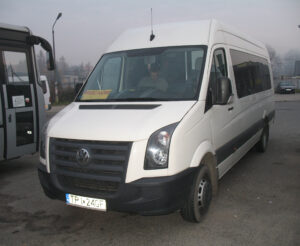
Personal Safety Recommendations:
- Travel documents: Keep passport copies separate from originals; hotels often require passport deposits
- Money management: Use hotel safes for large amounts; carry mixed small denominations for purchases
- Communication: Share itineraries with accommodations; maintain phone contact during longer excursions
- Health precautions: Carry basic medications; use bottled water in rural areas; apply sunscreen regularly
Cultural Etiquette and Religious Respect:
Morocco’s Islamic culture emphasizes hospitality, respect, and social harmony. Understanding basic cultural expectations enhances interactions and demonstrates appreciation for local traditions:
Appropriate dress codes:
- Religious sites: Long pants, covered shoulders, removed shoes when required
- Urban areas: Modest clothing recommended; shorts acceptable in tourist areas
- Beach areas: Swimwear appropriate at beaches; cover-ups required when leaving beach areas
- Rural areas: Conservative dress shows respect for traditional communities
Social interaction guidelines:
- Photography: Always request permission before photographing people
- Religious observance: Respect prayer times (five daily) and Friday afternoon congregations
- Ramadan considerations: Avoid eating, drinking, smoking in public during daylight hours
- Gender interactions: Understand that conservative families may have different social norms
Language Considerations and Communication
Arabic serves as Morocco’s official language, with Moroccan Arabic (Darija) used in daily conversation. French remains widely spoken due to historical connections and serves as a primary business and educational language. English proficiency has increased significantly, especially among younger people and those working in tourism.
Essential phrases for travelers:
EnglishArabicFrenchUsage ContextHello/Peace be upon youAs-salamu alaykumBonjourFormal greetingThank youShukranMerciExpressing gratitudePleaseMin fadlikS'il vous plaîtMaking requestsHow much?Bikam?Combien?Shopping, taxisWhere is...?Fin...?Où est...?Asking directions
Many tour guides in Rabat speak multiple languages fluently, with certified guides required to demonstrate proficiency in at least two international languages plus Arabic. When booking day trips from Rabat Morocco, specify language preferences to ensure clear communication and enhanced understanding of cultural and historical contexts.
Seasonal Day Trip Recommendations for Excursions depuis Rabat 2025
Spring Day Trips from Rabat (March-May 2025) – Perfect Weather Conditions
Spring represents the ideal season for day trips from Rabat Morocco, offering comfortable temperatures, blooming landscapes, and optimal conditions for outdoor exploration. The Atlantic influence moderates temperatures while the absence of summer crowds allows for more authentic cultural interactions and better photography opportunities.
Weather Advantages During Spring:
- Temperature range: 18-24°C (64-75°F) during daytime
- Rainfall: Minimal precipitation, mostly clear skies
- Ocean conditions: Calm seas perfect for coastal activities
- Daylight hours: Extended sunlight from 6:30 AM to 7:30 PM
Wildflower Viewing and Natural Beauty
The countryside surrounding Rabat transforms during spring months as winter rains give way to spectacular wildflower displays. Nature-focused excursions during this period offer unique opportunities to witness Morocco’s botanical diversity and photograph landscapes at their most colorful.
Recommended Spring Nature Excursions:
Mamora Forest Spring Blooms: The cork oak forest floor comes alive with wildflowers including:
- Moroccan iris (Iris tingitana): Endemic purple flowers blooming March-April
- Wild orchids: Several species including mirror orchids and bee orchids
- Cistus shrubs: Pink and white rock roses creating colorful understory
- Aromatic herbs: Wild rosemary, thyme, and lavender filling the air with fragrance
Agricultural Valley Tours: The fertile valleys between Rabat and the Middle Atlas mountains showcase spring agricultural activities:
- Almond orchards: Spectacular pink and white blossoms in February-March
- Wheat fields: Bright green carpets covering rolling hills
- Vegetable gardens: Market gardens supplying Rabat’s fresh produce
- Orange groves: Citrus trees in bloom with intoxicating fragrances
Summer Day Trips at Rabat Morocco (June-August 2025) – Coastal Focus
Summer in Rabat brings warm temperatures and peak tourist season, making coastal excursions and early morning cultural tours the most comfortable options. The city’s Atlantic location provides cooling sea breezes that moderate the heat, while extended daylight hours allow for comprehensive exploration of multiple sites.
Optimal Summer Scheduling:
Early morning departures (6:00-8:00 AM): Take advantage of cooler temperatures and dramatic lighting for photography at historical sites like Tour Hassan and Chellah. Most monuments open early and are significantly more comfortable before 10 AM.
Midday coastal activities (11 AM-4 PM): Focus on beach-based excursions, water sports, and seaside dining during the hottest part of the day. Rabat Beach and Temara Beach offer excellent facilities and cooling ocean breezes.
Evening cultural programs (5 PM-8 PM): Museum visits,